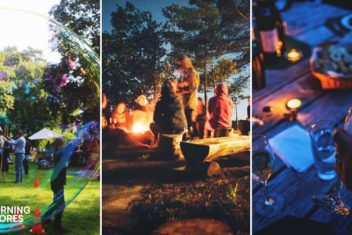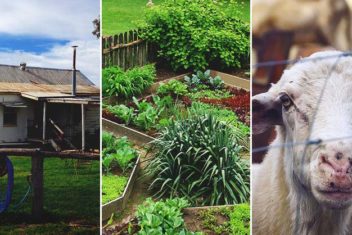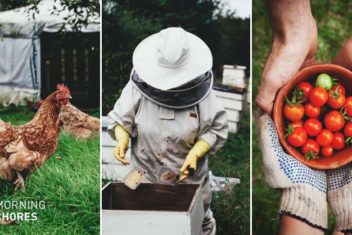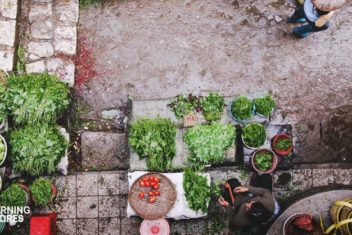Before I started homesteading, there was a period when I wanted to “turn off” Christmas. With endless rows of decorations on display at big box stores even before Thanksgiving, Christmas felt like it had been usurped by consumerism. It seemed ugly and cheap. I wanted no part of it.
Slowly though, as I’ve opted out of the endless shopping for gifts that won’t be remembered a few months from now, I have found my way back to loving Christmas. By focusing on long-standing traditions and bringing reverence back into the picture I see Christmas in a new light.
Here are some ways I have found to add meaning and beauty to celebrating a homestead Christmas.
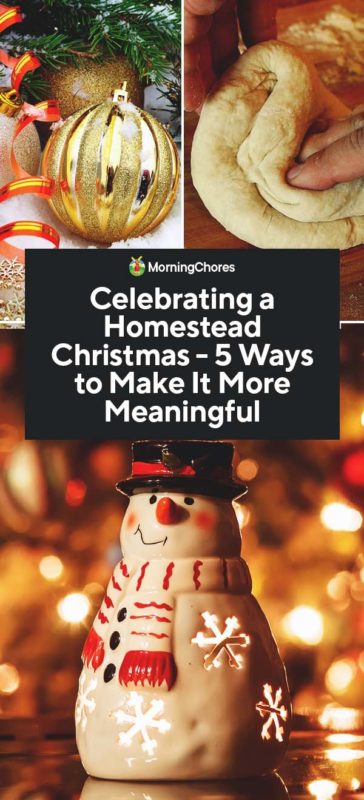
1. Celebrate Winter Solstice
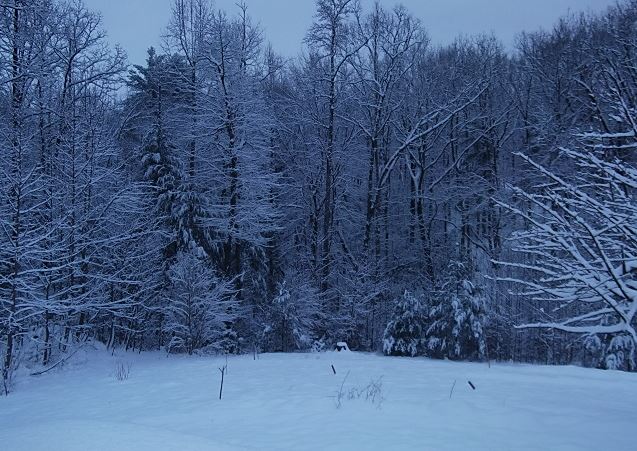
The winter solstice is the shortest day of the year. From that point forward, days begin to grow longer.
– Why December 25th?
December 25th, the date determined by the Church to be Christ’s birthday, also used to be the date of Winter Solstice on the old Roman calendar. This isn’t just a coincidence. It’s an important symbol of our connection with nature.
For cultures without easy access to electric light, it’s easy to understand why the turning point toward more daylight would be worth celebrating. For observers of the Christian tradition, it also makes perfect sense for baby Jesus, the bringer of hope, to be born on such a significant day.
– Honor Past Traditions
Whichever way you see it – the birth of Christ or the lengthening of daylight – celebrating the transition from dark to light is a hopeful one. For me, Christmas has become a reminder of the way old melds with new, of the cycles of nature, and a threshold of hope.
I celebrate the start of this transitional time of year by reflecting on the year past and planning for the year ahead.
2. Burn a Yule Log
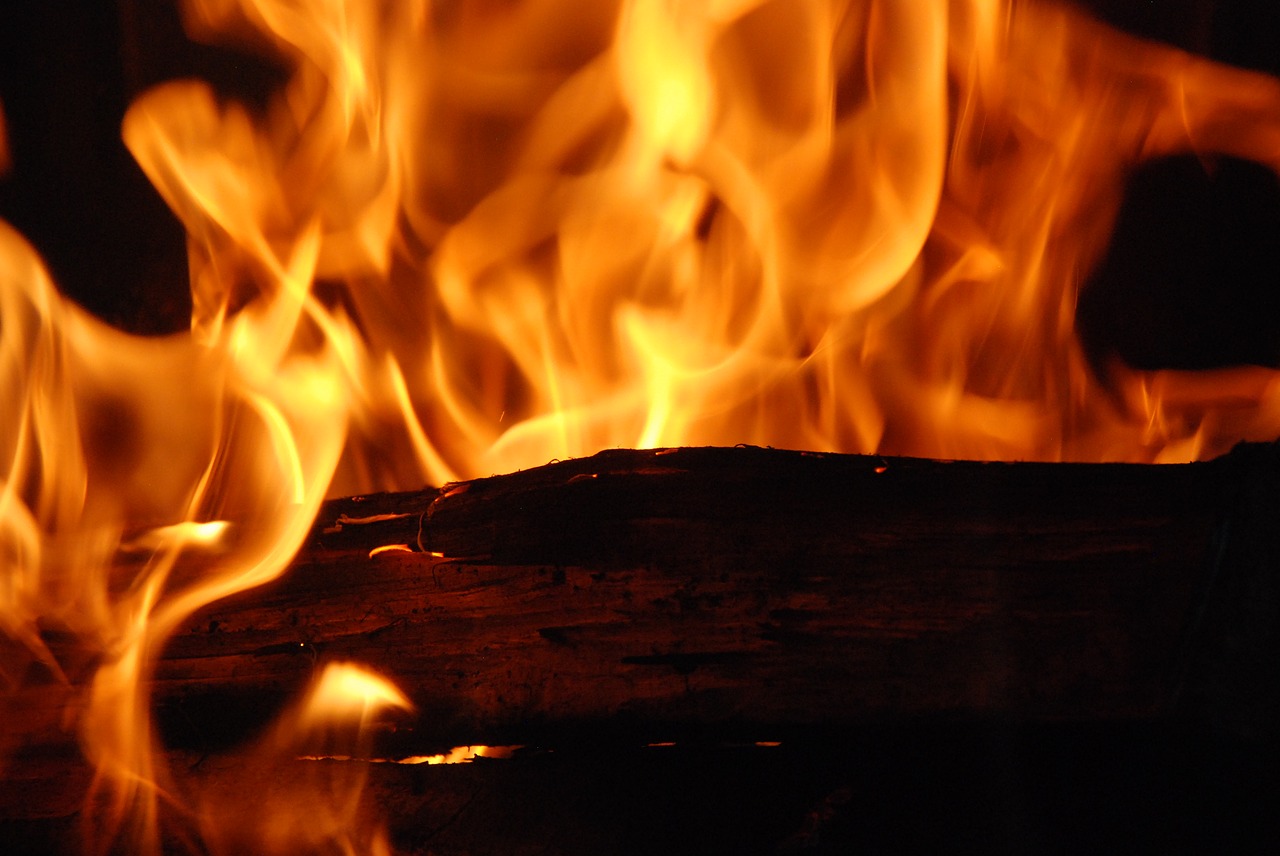
A yule log isn’t just any log. It’s a symbol of breaking with evil and intentionally setting out on the path of good. In the Christian tradition, it signifies the time before and after the coming of Jesus.
The yule log should be a long-burning, dry log that is sure to catch fire. Ideally, it should burn through most of Christmas Eve and light on the first try (for good luck).
Part of the yule log, charred and cooled, should also be kept as a reminder to do good throughout the year. Place it in a location that will reinforce your sense of yule, or joy, at reconciling your past evils and committing to do future good.
– Give a Yule Log
If possible, the yule log should be given or received as a gift. Since not many people practice this tradition anymore, it might be hard to find participants.
If you have neighbors or family with wood stoves, you can offer them a yule log and encourage them to share the tradition going forward. Then, maybe down the road, you’ll get a yule log given as a gift as well.
– Incorporate Yule Centered Family Reflection
The key to making this tradition meaningful is to do it with your full attention. Perhaps talk about the meaning of the yule log with your family before you light the log.
Consider having everyone silently reflect on the things they wish they had done differently in the year before. Then, each person could share one good act they hope to do in the future.
– Celebrate Solitude and Quiet Contemplation
You can also burn the yule log as a solitary tradition. Use a journal to reflect on your mistakes and plan good deeds for the year ahead. Spend some quiet time contemplating the burning log.
– Use Caution
When removing the log to preserve it for the year, make sure to use fire tongs. Extinguish the flames using a bucket of water. Then allow the log to dry before giving it a place of honor in your home.
– Keep It Going
Next year, use your partial yule log to start your next yule log as a symbol of continuity of your efforts to do good with your life.
– Create an edible Yule Log
In addition to your traditional yule log, grace your Christmas table with a spectacular yule log dessert, to also emphasize this tradition.
3. Make Natural Decorations
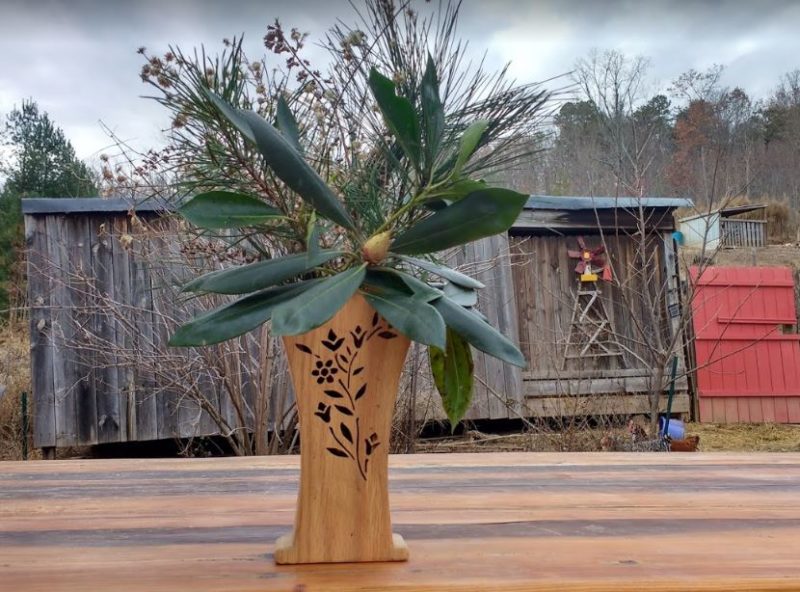
Throughout history, gathering and making your Christmas decorations on Christmas eve was a common tradition. Food preparations and cookie ornaments were made in advance. However, fresh garlands and popcorn strings, and putting up a tree, were activities done as part of celebrating a homestead Christmas on Christmas Eve.
– Use Locally Foraged Items
Most holiday decorations now are made of, or look like, evergreens. In the past, though, people would simply go outside and collect whatever natural elements they found beautiful.
In desert areas, tumbleweed and dried brush might have been used, and in mountain areas, evergreens and pine cones were common.
– Recycle Decorations After Use
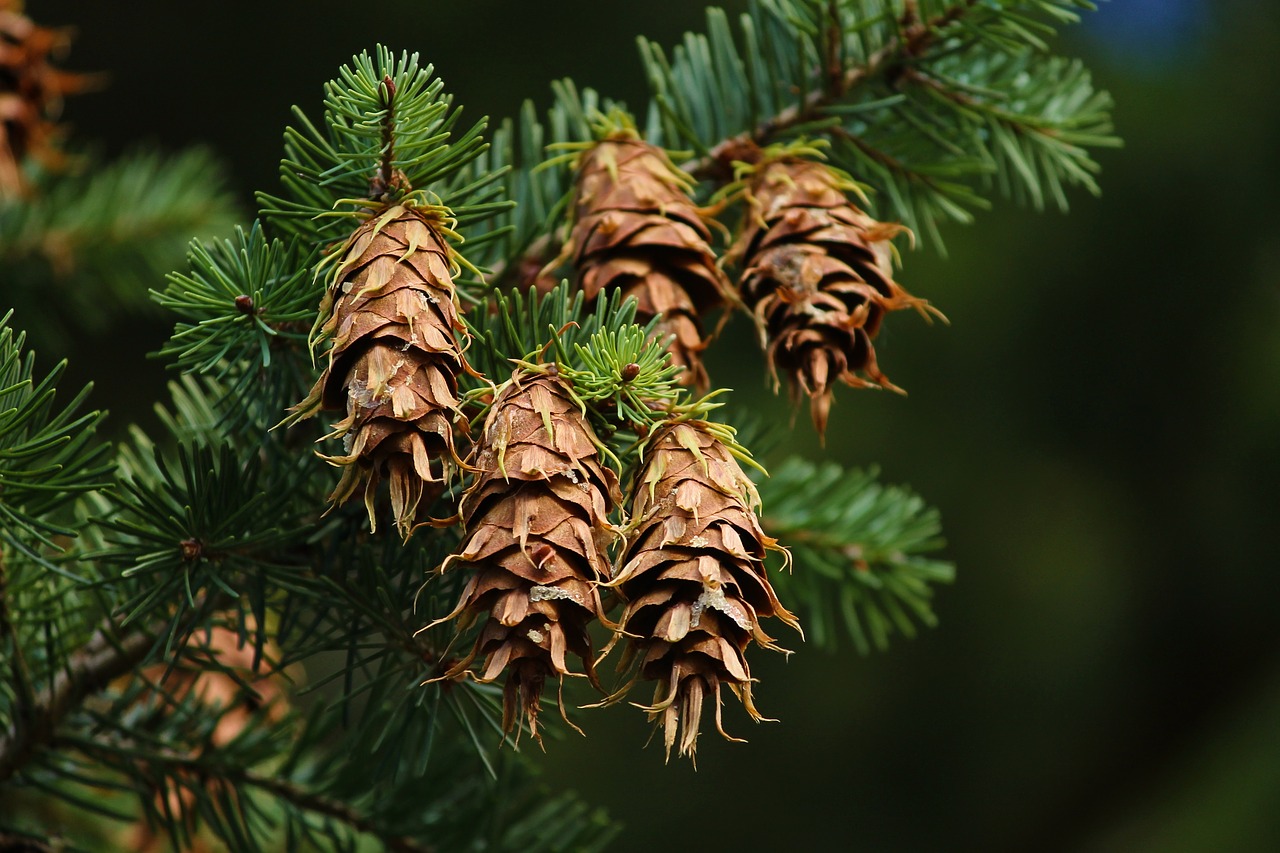
In a sense, natural decorating was about putting nature’s gifts on a pedestal (or a tabletop) and honoring them. The key was to find natural items, in winter, that could be assembled and made beautiful. Decorations would then be returned to decay in their natural environment after the holiday.
– Alter Your Aesthetics
You may not be able to make ornaments that look like what you’d buy from a store. However, you can create unique and beautiful items that no one else can duplicate. Homemade decorations are works of art and are infinitely more interesting than the store-bought stuff.
4. Bake Like Old Times
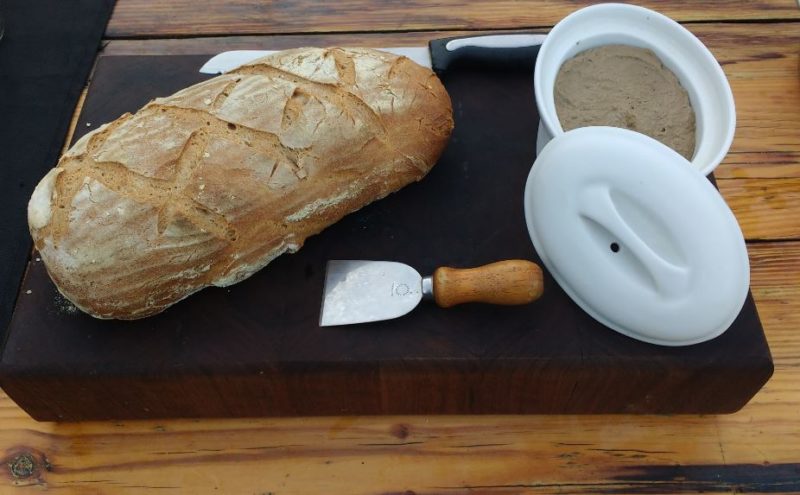
Even today, baking and Christmas go hand in hand. However, in days gone by, all the commercial ingredients we rely on today were not available.
– Use Historical Recipes
Fruitcakes, mincemeat pies, dried apple pies, and spice cookies were made from ingredients put up by the family earlier in the year. These items were sweetened by sorghum, maple, honey, and molasses, not processed sugar. Flour was ground fresh from non-GMO grains.
To recreate this experience, use historic recipes that rely on rustic ingredients. This can transport you back in time and connect you to a more seasonally-grounded baking experience.
– Use Authentic Ingredients
You can grow your own ingredients, dry your fruits, use a mill to grind your flour, etc. Or, you can buy authentic ingredients from specialty producers and make treats with more traditional flavors. Either way, stick to pre-industrial traditional ingredients.
Dried apple pies are an easy place to start. You can find unsweetened dried apples at the grocery store if you don’t have your own. Then make the batter using homemade butter and fresh ground flour. Substitute sugar for a less-processed locally available sweetener.
Do as much as you can by hand. Be grateful for your ingredients (knowing how much work goes into growing them). Savor the flavors and simplicity of old-world cooking without the overly processed ingredients and complicated kitchen gadgets favored today.
5. Join the Slow Gifting Movement
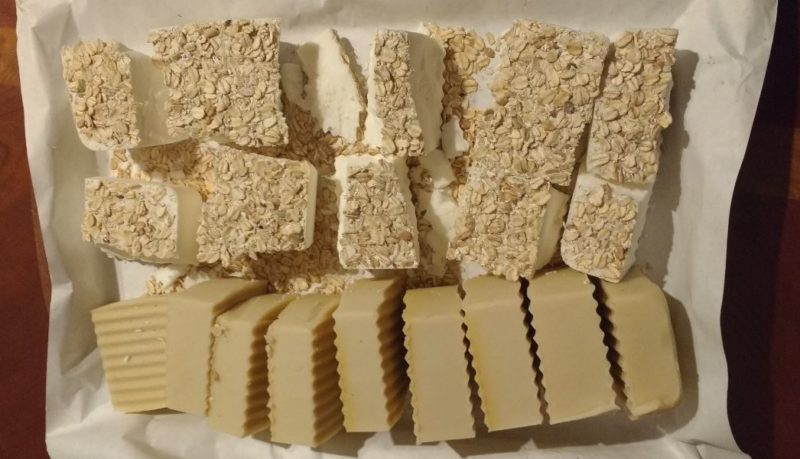
One of the things that bother me most about modern Christmas celebrations is the emphasis on giving and receiving gifts that will be obsolete or forgotten in a short period. Those kinds of gifts cost money, create waste, and often harm the environment.
– A Movement Towards Minimalism
Slow gifting isn’t quite the international phenomenon that “slow food” is. Yet, it’s catching on. Particularly in light of the minimalist movement, people don’t want (or need) more tchotchkes or non-durable goods to care for in their lives.
– Gifts in the Age of Endless Oranges
Once upon a time, oranges were a favored Christmas gift. Oranges were rare, expensive, and carried with them a sense of sun and warmth when shipped by train to cold places in time for Christmas.
This is why things like clove-covered oranges and cinnamon-scented orange slices are common in home ornament making today. They are throwbacks to the times when oranges were still special.
In the age of everything being available all the time, it would seem like a joke if you gave someone a basket of oranges for Christmas today. This is why we keep trying to come up with new and novel things to give each other every year. We’re trying to find the modern-equivalent to Christmas oranges to offer our loved ones.
This is becoming harder and harder to do, given the pace of technological innovation. Yet, we can still slow it down. We can give things that convey a sense of meaning, experience, and are special in the way that oranges would have once been.
– Make It Personal

Part of what makes some gifts so much better than others is the intent of the giver. With homemade gifts like knitted scarves and carved spoons, the maker puts their time, love, and energy into those gifts. When you receive them, the spirit of the giver is embodied in the work.
Still, when someone gives you a scarf, and you’ve got 10 others in your closet, the initial intent of the gift quickly gets lost in the overload. However, if someone notices that you are always using a cutting board like a hot plate and knits you a heavy-duty wool trivet that matches your kitchen… that’s a bit different.
Making homemade gifts is a great way to practice slow gifting. However, using your talents to make your loved ones something unique and special that they need is even better.
– Create Experiences
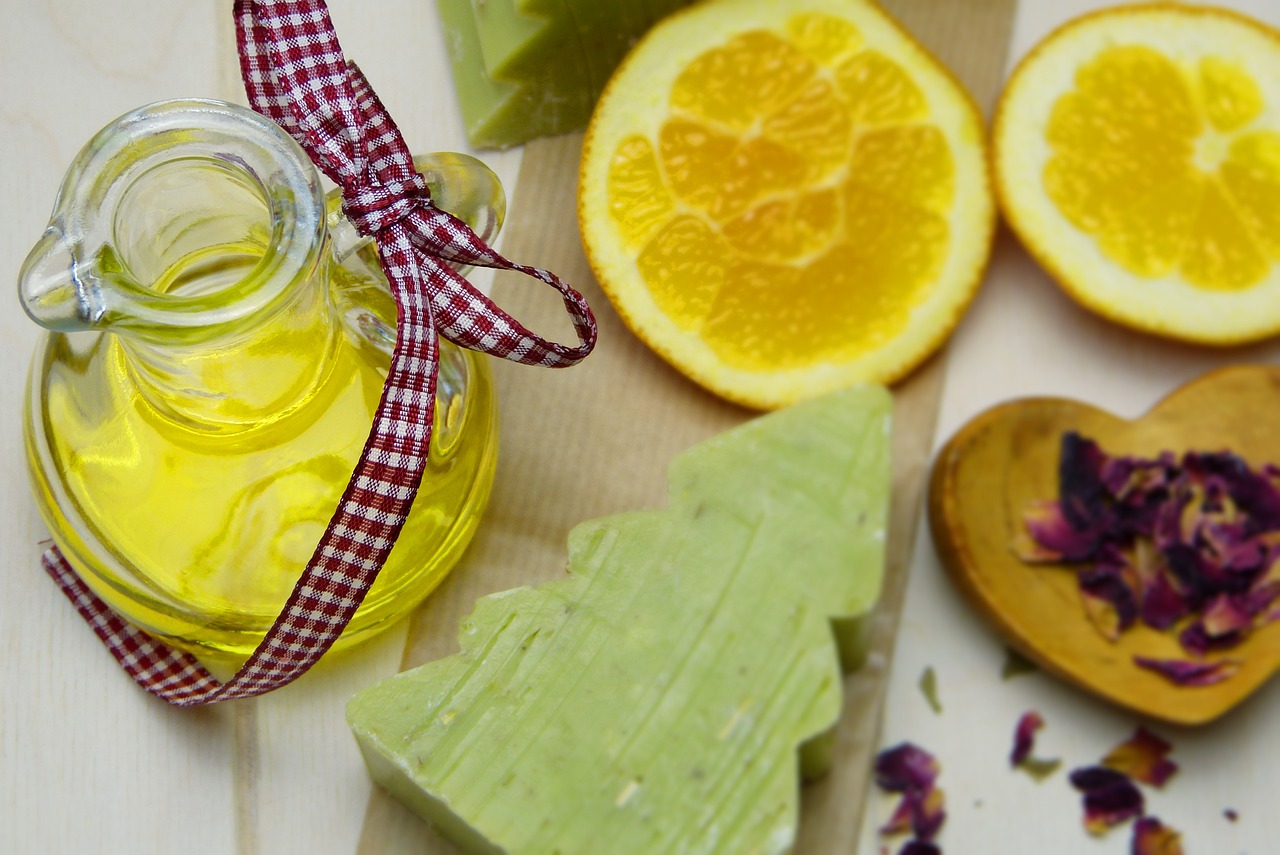
I have given several gift cards for things like wine tastings, pedicures, and art lessons that were never used. So, when I say “create experiences” — I don’t mean give people a gift card so they can go have the experience on their own. That doesn’t seem to work out all the time.
As homesteaders, though, we have skills and tools to offer experiences that other people would happily pay for as gifts. For example, I once paid $70 for a soap-making class. Now, when someone I care about says they dream of making soap, I know what to get them for Christmas.
For the low price of lye, I can give my soap-interested friends and family a homestead soap-making experience. Using lard I rendered, and goat’s milk from my herd, plus equipment I already have, I can create an experience others would pay a lot to have.
I also get to spend time and share my skills with my loved ones. Plus, to them, something I consider normal like soap-making, is an experience that they’ll remember forever. Sharing homestead experiences is the kind of gift that keeps on giving.
Conclusion
Celebrating a homestead Christmas doesn’t have to be a giant spend-fest that leaves you broke, exhausted, and empty-feeling at the end. It should be a time of caring, sharing, and savoring simple experiences that add meaning to your season.
On that note, I wish you all a wonder-filled season of real cheer, reflection, and hope for the year ahead!

